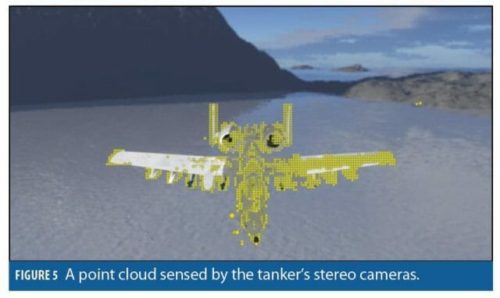A research paper by a team from the U.S. Air Force Institute of Technology describes how a tanker-centric stereo vision system can be used for automated aerial refueling (AAR).

Photo: U.S. Air Force
Currently, differential GPS is used so that the tanker and receiver are on a stable flight path for the transfer of fuel. The authors argued that by having a vision-based system can improve the integrity of the process.
The combination of GNSS and vision-based inputs may improve accuracy compare to standalone systems. As refueling occurs near combat zones, if wide-area GPS-denial or spoofing occurs, employing a vision-based system allows refueling to continue.
Visual relative navigation also offers some distinct advantages over GNSS-based navigation. Tankers and receivers must maintain constant communication and information exchange in GNSS-based methods in order to obtain cm-level accuracy or better. To enable AAR based on GNSS, the receiver needs to be modified. The stereo vision technique modifies only the tanker; no changes were made to the receivers. This keeps costs down as only a small number of tankers are required to be modified.
For more information, hit the Source below